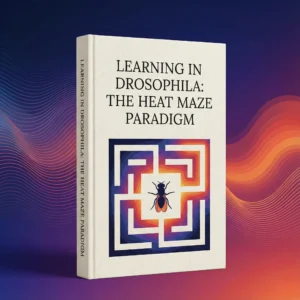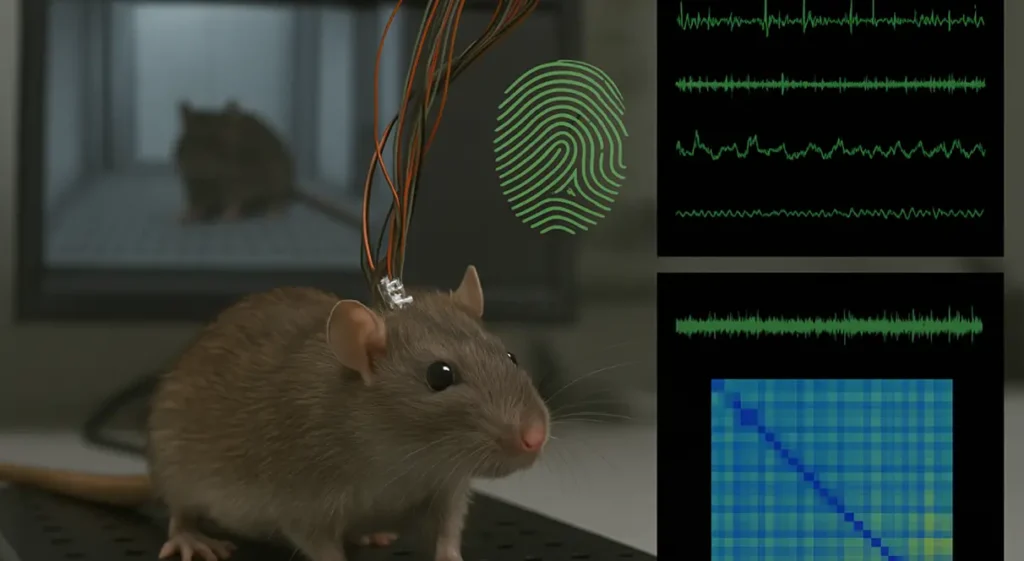

Understanding the neural basis of spontaneous behavior in rodents demands an integrated approach—one that moves beyond constrained paradigms and opens the door to the richness of freely expressed, naturalistic actions. In recent years, combining electrophysiological recordings (LFPs and spikes) with unsupervised behavior pipelines has emerged as a transformative method for discovering behavioral fingerprint motifs—distinct movement patterns extracted from high-resolution pose estimation data—and linking them to neural oscillatory states.
This comprehensive article explores the current methodology and theoretical rationale behind synchronizing multichannel neural data with unsupervised behavior segmentation, with a focus on spontaneous behaviors in rodents. It outlines technical workflows, interpretative strategies, and case studies while emphasizing the utility of this approach in neuroscience research.
Spontaneous behavior—actions initiated without explicit external cues or structured reinforcement—is a cornerstone of naturalistic neuroscience. In laboratory settings, behavioral paradigms have traditionally relied on predefined tasks with rigid trial structures. While useful for isolating specific cognitive or motor processes, these controlled tasks often fail to capture the rich, continuous spectrum of behavior exhibited by animals in real-world contexts.
In contrast, spontaneous behavior represents the organism’s intrinsic neural decision-making unfolding in real time. Rodents engage in grooming, rearing, scanning, sniffing, pausing, and exploratory locomotion not because they are cued to, but because of internal drives, states, or motivations. These actions emerge from complex, ongoing computations in neural circuits, reflecting mood, arousal, expectation, and internal goals.
Importantly, spontaneous behavior:
From a methodological standpoint, spontaneous behavior opens up new analytical possibilities. With unsupervised learning, researchers can identify recurring motifs and transitions without the bias of human-labeled categories. These motifs often reveal unexpected structure and temporal regularity, demonstrating that even untrained behavior is highly organized.
Ultimately, studying spontaneous behavior is not just about observing animals “doing their own thing.” It’s about acknowledging that the brain’s default mode is self-organized, adaptive, and exploratory—and that understanding these self-initiated actions is essential for a complete picture of brain function.
Fingerprint motifs are recurring, structured units of behavior—brief sequences like a grooming stroke, rear-pivot, or pause-sniff—that emerge from high-resolution pose data using unsupervised learning. Rather than relying on human-labeled categories, these motifs are discovered directly from movement patterns, revealing the natural grammar of behavior.
This data-driven pipeline allows for discovery of micro-actions that might be too subtle, fast, or complex for traditional scoring.
When aligned with LFP or spike recordings, motifs can be mapped onto specific neural states—like theta during forward exploration or beta suppression during motor transitions. This enables a powerful framework to study how neural dynamics shape spontaneous behavior.
In short, fingerprint motifs are the behavioral building blocks that connect natural action to brain activity—enabling deeper insights into how organisms generate, organize, and regulate movement.
To truly understand how the brain supports spontaneous behavior, it is essential to synchronize neural activity—local field potentials (LFPs) and spike trains—with the fine-grained behavioral motifs extracted from pose data. This integration bridges the gap between what the animal is doing and how its brain is dynamically operating in real time.
Neural signals are temporally precise. Oscillations, spike bursts, and phase relationships evolve on the scale of milliseconds to seconds—the same time frame over which behavioral motifs unfold. Without proper synchronization, aligning behavior and brain data becomes imprecise, obscuring the true relationship between action and neural state.
Most behavioral setups designed for neuroscience research, including those offered through Conduct Science’s systems, support hardware-based timestamping or use shared clocks between neural recording rigs and behavior cameras. This allows for frame-by-frame alignment between pose estimates and electrophysiological data.
The standard workflow involves
This integration also supports hypothesis generation. For example, do specific hippocampal motifs reflect internal memory reactivation during exploratory pauses? Do cortical desynchronizations signal upcoming transitions in motor planning?
Once behavior and neural data are temporally aligned, researchers can move beyond simple correlations to test causal relationships:
Moreover, this framework lays the groundwork for closed-loop experiments, where neural states trigger real-time behavioral feedback—or vice versa—using motif boundaries as control points.
In sum, synchronizing electrophysiological signals with pose-derived behavioral motifs provides a high-resolution, temporally precise view of how spontaneous actions emerge from ongoing brain dynamics. It turns behavior into a readable neural script—one that is no longer isolated from the circuitry that generates it but fully embedded within it.
In a study using high-density silicon probes and multi-camera pose estimation, rodents exploring a Conduct Science open field arena displayed increased hippocampal theta power during motifs involving directed forward motion, particularly those characterized by elongated posture and nose extension. These motifs were unsupervised clusters derived from head-tail angle and center-of-mass velocity. Theta was notably absent during local head scanning or rearing, suggesting distinct oscillatory modes underpin specific subtypes of exploration.
Another experiment combining whisker and forelimb tracking identified grooming motifs, including paw-to-snout contact and symmetric bilateral strokes. Transitions between these motifs were marked by transient beta desynchronization in somatosensory and motor cortices—suggesting neural signatures for switching motor states rather than the grooming acts themselves.
In homecage environments, rodents frequently enter idle states where they adopt immobile but alert postures. These motifs, defined via unsupervised pose clustering, consistently coincided with increased gamma power and sparse, burst-like spiking in the medial prefrontal cortex—indicative of internal processing or attention shifts despite outward inactivity.
Integrating electrophysiological recordings with unsupervised behavioral motifs opens powerful avenues for preclinical research, especially in the study of neurological disorders, psychiatric conditions, and pharmacological interventions. These applications go far beyond traditional behavioral scoring, offering sensitive, objective, and high-throughput ways to characterize phenotypes and drug effects at both the behavioral and neural levels.
Many disease models—such as those for Parkinson’s, autism spectrum disorders, Alzheimer’s, or schizophrenia—exhibit behavioral changes that are gradual, context-dependent, or highly nuanced. Standard measures like total distance moved or time in a zone often fail to capture these subtleties.
By contrast, fingerprint motifs identified via unsupervised learning can reveal:
When these behavioral anomalies are aligned with LFP or spike abnormalities—such as exaggerated beta power, reduced theta modulation, or abnormal burst dynamics—they provide specific, interpretable biomarkers of dysfunction.
Unsupervised behavior analysis is especially powerful in drug discovery and toxicology, where treatment effects may be subtle or non-linear.
For example:
This approach enables
Conditions such as depression, OCD, and autism spectrum disorder often involve complex behavioral abnormalities not easily reduced to simple metrics. With fingerprint motifs, researchers can detect:
These patterns often correlate with changes in neural synchrony, amygdala-prefrontal coherence, or dopaminergic firing dynamics, providing mechanistic insight into otherwise abstract symptom domains.
In progressive models, such as those for Huntington’s or ALS, spontaneous behavior often changes before overt deficits become visible. Motif analysis enables:
This makes the approach ideal for monitoring disease progression and evaluating neuroprotective interventions.
The motifs extracted from rodent models often resemble fragments of human behavior—micro-movements, posture shifts, and gaze patterns—which are increasingly analyzed in human clinical research using wearable sensors or motion capture. When motif-linked neural patterns are conserved across species (e.g., theta-linked exploration), the findings gain translational power, bridging rodent models and human symptoms.
By marrying unsupervised behavioral analysis with electrophysiology, researchers gain a multidimensional toolkit to dissect complex pathologies and test interventions with unmatched precision. In an era where behavioral neuroscience is shifting toward naturalistic paradigms and big data, this approach offers a future-proof strategy for decoding disease and guiding therapeutic development.
Conduct Science supports this integrated research paradigm through its high-speed video arenas, synchronized data acquisition systems, and modular electrophysiology rigs. The behavioral tracking tools available are compatible with open-source pose estimation frameworks, allowing researchers to build custom unsupervised pipelines tailored to their experimental needs.
Check out in-depth system walkthroughs and experimental demos on the Conduct Science YouTube Channel for visuals of pose tracking setups, behavior extraction, and synchronization methods.
Ethoneurophysiology represents a new frontier in neuroscience—an approach that integrates high-resolution neural data with the complexity of real, spontaneous behavior. Instead of constraining animals to rigid tasks, this method captures the brain in its natural operational mode, continuously responding to internal drives and environmental context.
Beyond Trials: The Behavior-First Approach Traditional neuroscience has long relied on stimulus-response paradigms, breaking behavior into discrete trials and averaging neural responses across repetitions. While useful for isolating specific variables, this approach often oversimplifies the fluid and dynamic nature of real-world behavior. Ethoneurophysiology shifts this focus by treating behavior as a continuous stream rather than a segmented sequence. It emphasizes internal states and spontaneous transitions over external cues and values moment-by-moment neural dynamics rather than averaged outcomes. This perspective provides a richer and more accurate view of how the brain generates, modulates, and adapts behavior in natural settings—capturing its complexity, variability, and biological relevance.
Behavioral Motifs as a Bridge: Unsupervised learning offers a powerful means of extracting recurring behavioral motifs from continuous pose data without relying on human-defined categories. These motifs function as data-driven behavioral units that can be precisely aligned with neural signals, providing a robust framework for analysis. They act as contextual anchors, helping researchers interpret patterns in LFPs and spike trains in relation to natural movement. Importantly, this approach can uncover subtle or previously unrecognized behaviors that are easily missed by human observers. By revealing the brain’s organization around these behavioral fragments, motifs provide a natural scaffold for understanding how neural circuits encode, predict, and initiate specific actions.
Insights from Integrated Analysis: When behavioral motifs are synchronized with electrophysiological recordings, researchers gain access to a deeper layer of interpretation. This alignment makes it possible to identify neural signatures that correspond to specific actions or behavioral transitions, revealing how distinct patterns of brain activity map onto natural movement. It also enables the detection of latent brain states—such as those governing exploration, hesitation, or vigilance—that may not be apparent through behavior alone. By linking these neural dynamics to structured behavioral outputs, researchers can begin to construct predictive or even causal models of how circuits drive behavior. This integrated approach is particularly powerful for investigating complex processes like decision-making, motivation, or cognitive flexibility, where the interplay between spontaneous behavior and neural state is especially nuanced.
Ethnoneurophysiology offers a high-resolution, biologically grounded way to study how brains produce behavior—not just in fragments, but as a coherent stream. It embraces variability, context, and spontaneity—core features of natural behavior—and ties them directly to the neural circuits responsible.
As neuroscience moves toward more ecological, translational, and individualized models, ethnoneurophysiology provides both the philosophy and the tools to make that future a reality.
